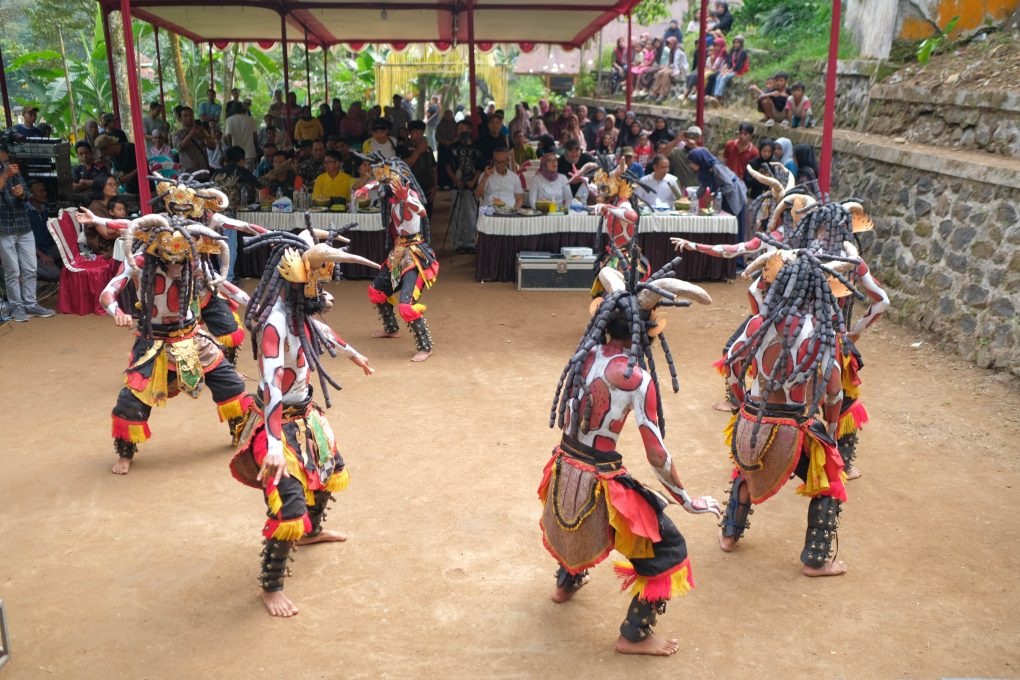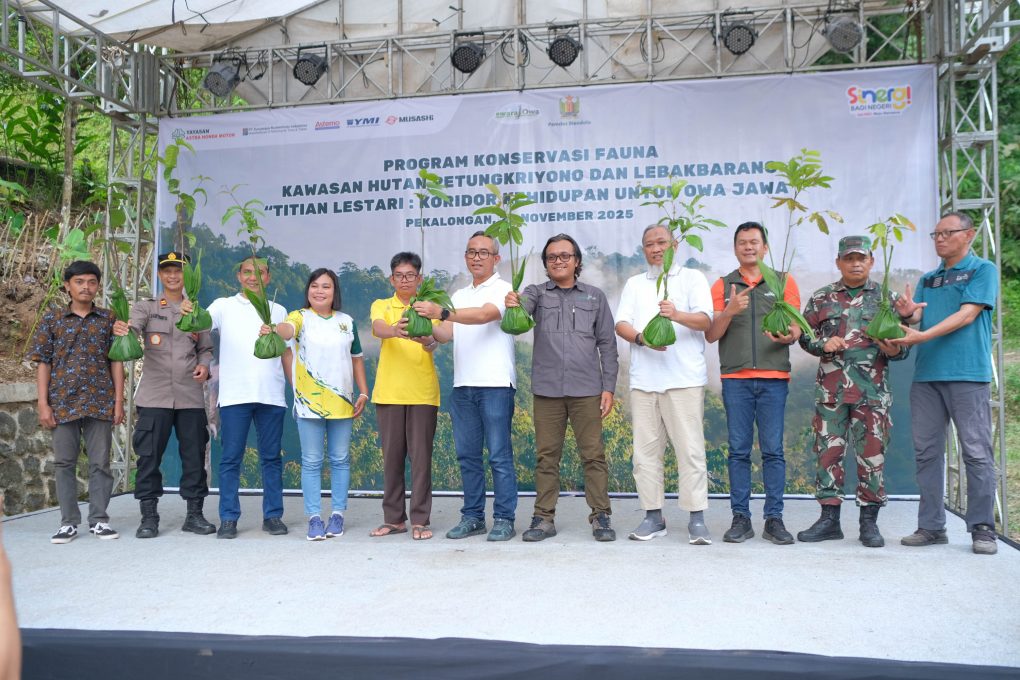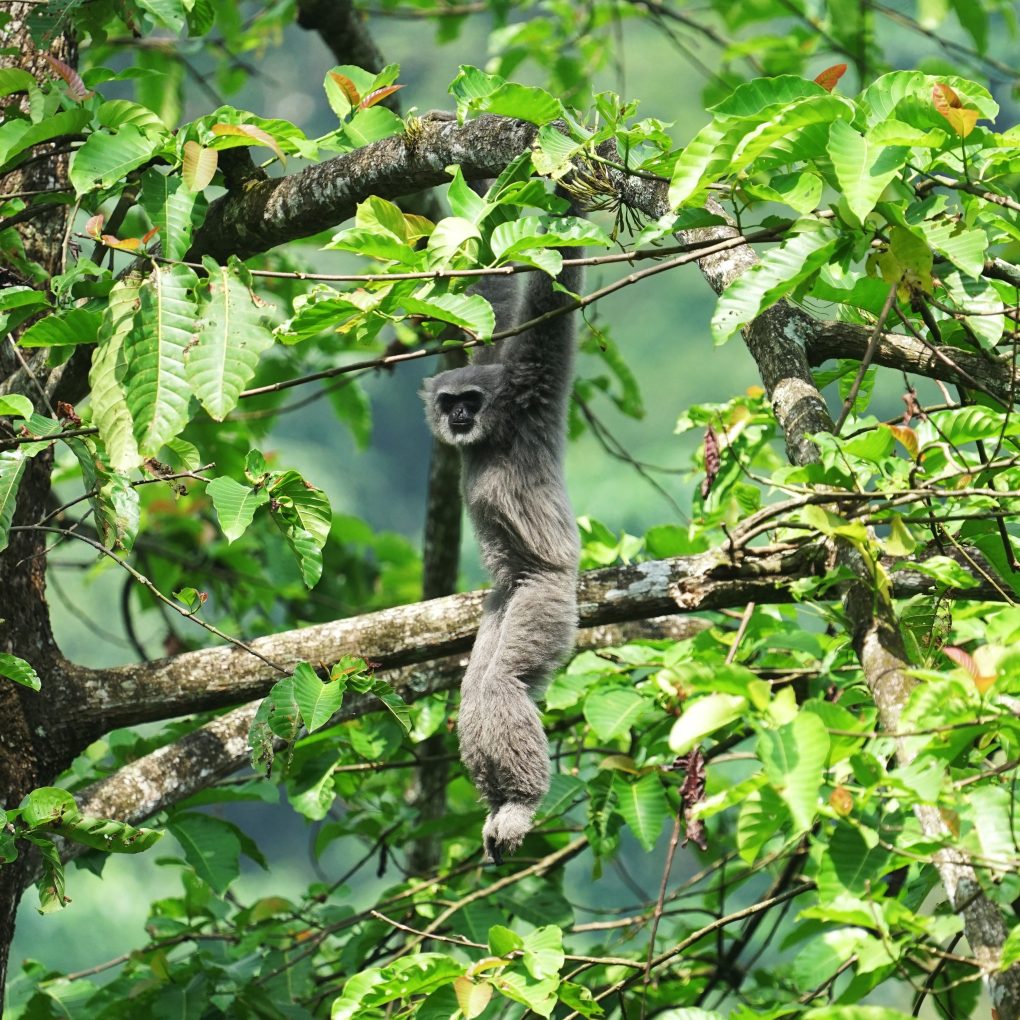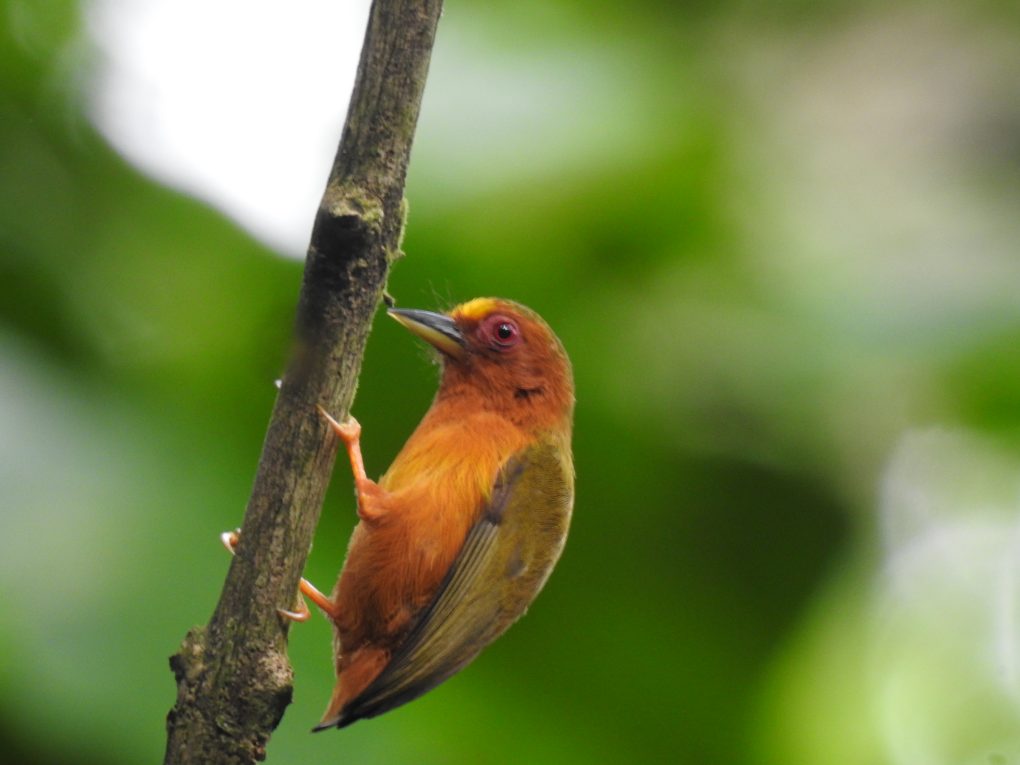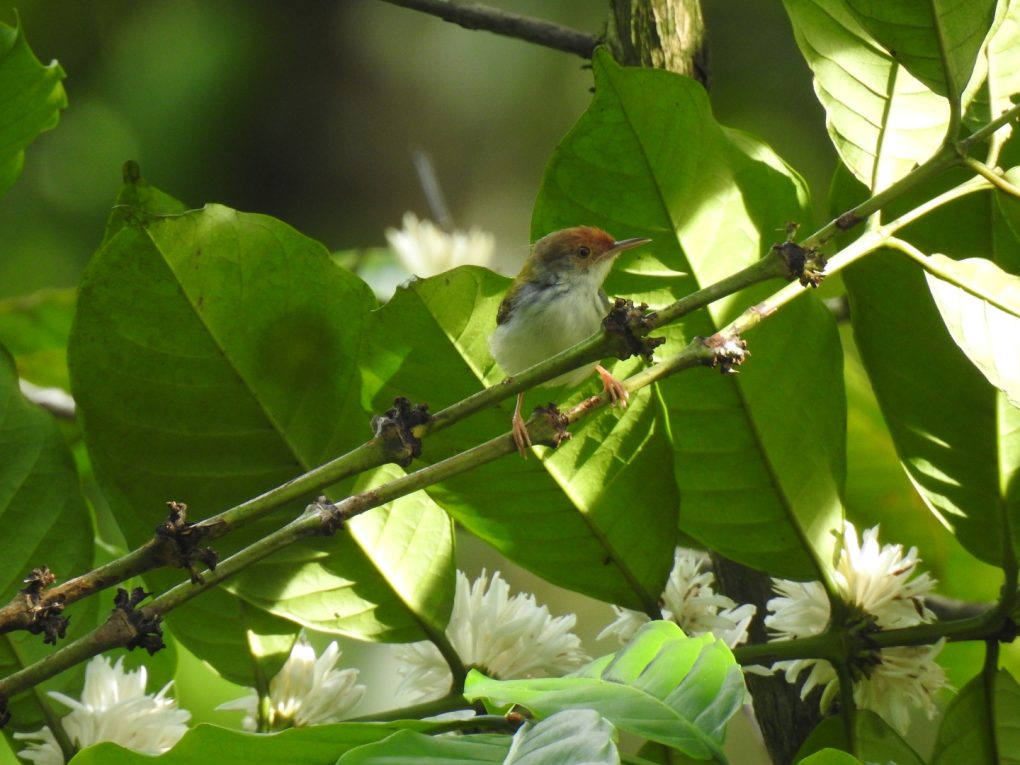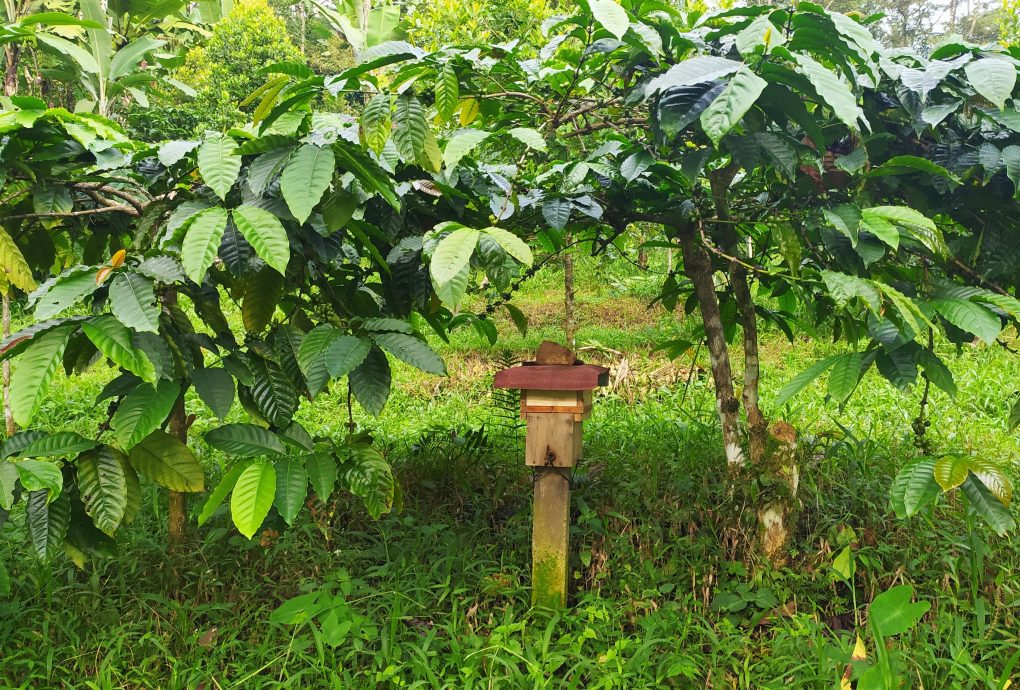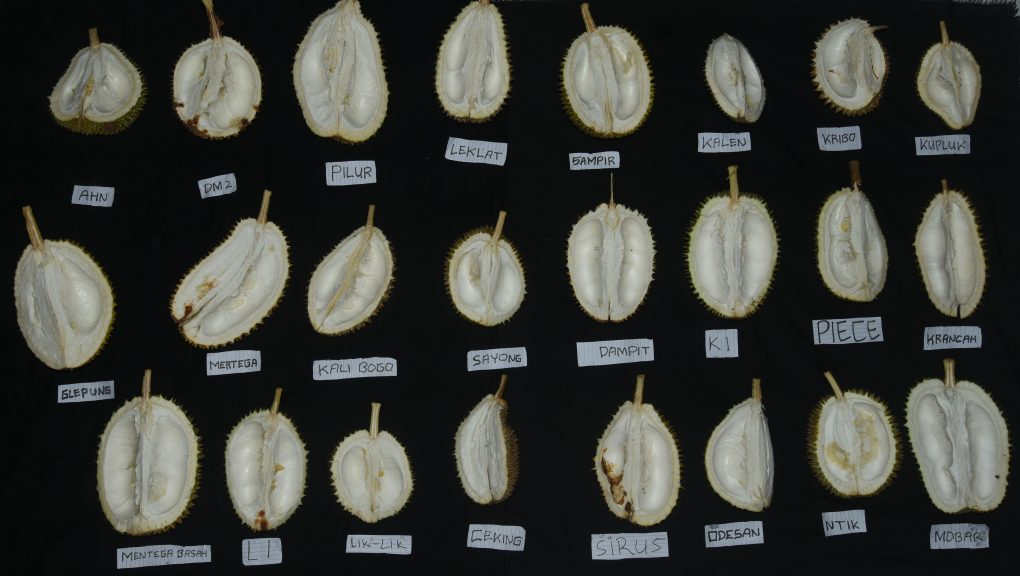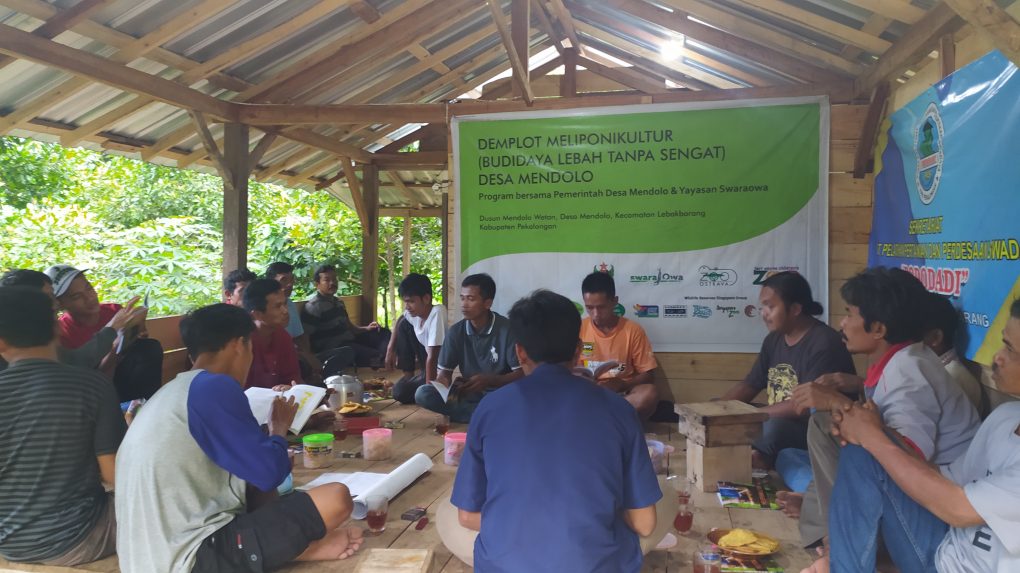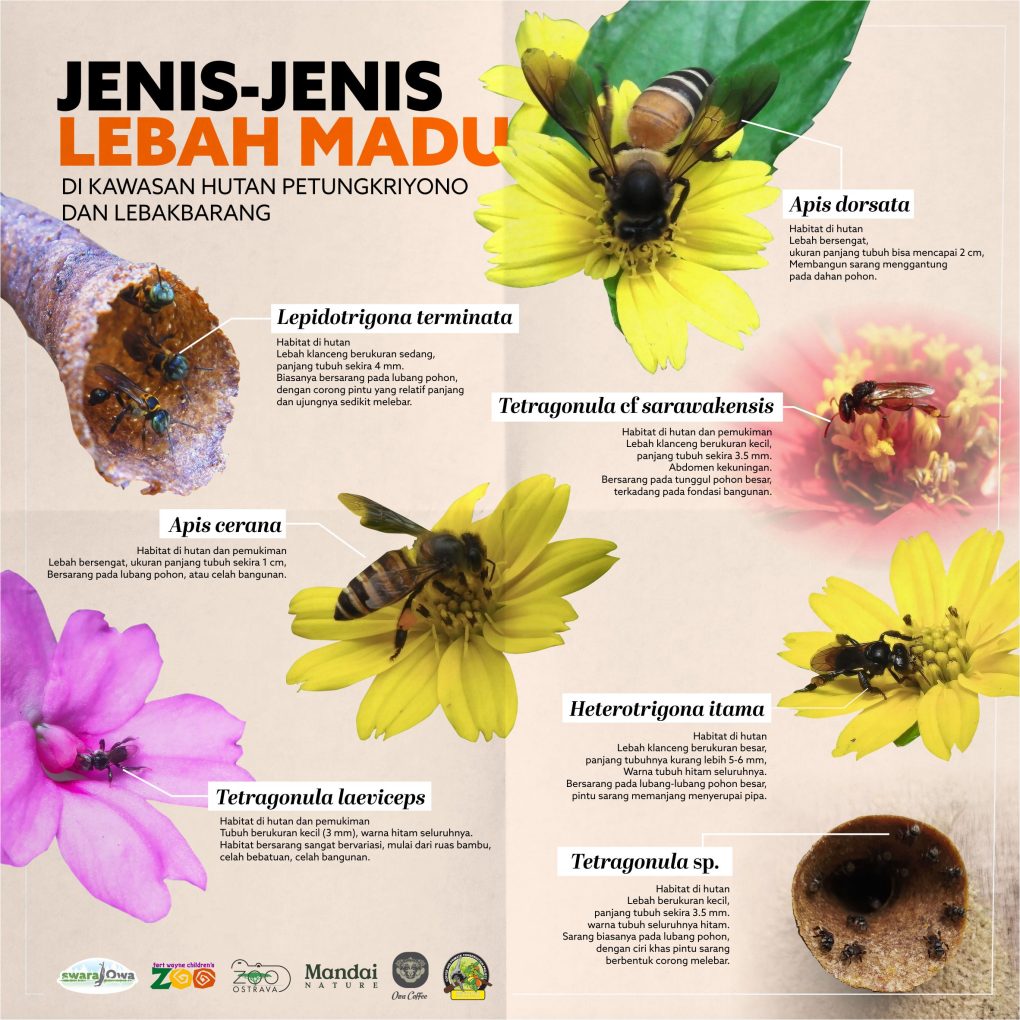by : Sidiq Harjanto ( SwaraOwa) dan Alex Rifa’i (PPM Mendolo)

a group of gibbons in Sawahan forest ( doc. PPM Mendolo)
Javan gibbon (Hylobates moloch) is one of the nine species of gibbon in Indonesia. The distribution of this grey ape is endemic to the island of Java and is limited to the western part of the island. Owa Jawa (in Javanese) is found in lowland tropical forest habitats with certain specifications. They live arboreally (on the forest canopy) so they need good forest canopy connectivity. Currently, the Javan gibbon is listed as an endangered species in the IUCN red list.
Habitat fragmentation is a threat that accelerates the extinction of this charismatic species. The habitat fragmentation condition referred to is when the forest area no longer provides good canopy or canopy connectivity. Simply put, an expanse of forest is broken up into smaller blocks. Because of the need for a connected forest canopy, the slightest disturbance in the gibbon’s habitat, such as the opening of a road, can fragment the habitat for the gibbon.
When a group or family of gibbons is separated from the population, it increases the chance of inbreeding which leads to genetic drift. Intermarriage between closely related family members dramatically reduces gene diversity. This results in health problems and adaptability and increases the risk of extinction. The more massive the isolation of the population, then the rate of extinction of a species is also increasing.

map of fragmented gibbon habitat in Mendolo
Monitoring gibbon groups in fragmented habitats
It takes care to ensure habitat fragmentation for the Javan gibbon. At first glance, the land cover often looks relatively good. However, if we refer to the specific needs of the ape species from the Hylobatidae family that require heterogeneous forests, it turns out that not all areas match the needs of the gibbon population. There are several pockets of Javan gibbon habitat forest surrounded by garden areas, such as durian and coffee, or other homogeneous vegetation cover that is not compatible with the needs of the habitat.

participatory gibbon monitoring in Mendolo village ( Doc. PPM Mendolo)
Paguyuban Petani Muda (PPM) Mendolo, in collaboration with Swaraowa, has been monitoring groups of Javan gibbons that are in small forest blocks that are separated from the main forest block. Groups of gibbons generally share space in forested areas that are far below the ideal territory. From this monitoring data, future conservation efforts can be formulated.
The monitoring team consists of two or three people every day, leaving in the morning around 05:30 WIB or sometimes the departure schedule can be even earlier. Upon arrival at the monitoring location, the team began to observe the daily activities of the group of Javan gibbons, such as eating, playing, resting, and sleeping. In addition, we also recorded the types of fodder trees, and the average height of the canopy they used for activities. These data are important considering that their habitat area overlaps with community arable land.
Several times groups of gibbons were observed crossing into the coffee plantation area where the average height of the trees was no more than five meters. In fact, there were some residents who reported that they had seen a Javan gibbon walking on the ground. The phenomenon of gibbons walking on the ground seems funny at first glance, but this finding is worrying because it deviates from its natural behavior. Owa Jawa is a completely arboreal animal, if it comes down to the ground to cross from one tree to another, this indicates that its habitat is not ideal.
Forest corridors for habitat connection
Right now we are racing against time. Data on habitat fragmentation for the Javan gibbon in this landscape is still very limited. However, there are beginning to be findings that indicate that condition. This requires a prompt response to avoid the risk of accelerating extinction. Starting from the data that is still very limited, efforts, albeit on a small scale, have been made. One of the efforts made is through the creation of habitat corridors and the enrichment of fodder trees.

planting trees by Mendolo community ( Doc. PPM Mendolo)
This year, it is the second year for the residents of Sawahan Village, Mendolo Village to carry out a corridor planting program and the enrichment of forest tree species. The seeds planted this year include Babi wood (Crypteronia sp.), Sapi wood (Pometia pinnata), Rau, sentul , Nangkan. A total of about 700 seedlings. Some seeds are planted on the borders of small rivers, or grooves according to local terms. Planting in these grooves is expected to be a forest corridor in the future, as well as for water and soil conservation.
In addition to river border areas, various forest fruit seeds are also planted in arable land to increase the population of fodder trees for Javan gibbons. Types of fodder trees that gibbons like are rau (Drancontomelon dao), bendo (Artocarpus elasticus), nangkan (Artocarpus rigidus), and sentul (Sandoricum koetjape). With the enriched agroforestry model, it is hoped that groups of Javan gibbons will still be able to survive, at least from the side of the title connection and feed availability.
The concept of the habitat corridor in Mendolo is similar to the community baboon sanctuary program that has succeeded in maintaining the population of howler monkeys in Belize, Central America. It is long-term in nature and requires the collaboration of various parties. In principle, this program seeks to find an equilibrium between the ideal habitat needs of the Javan gibbon and the economic interests of the community from land management.
Community-based conservation
It cannot be denied that many environmental problems are global in nature, such as climate change, mass extinction, and deforestation – including habitat fragmentation. However, the ways of handling it can start from a small scale. Conservation actions need to be adapted to the local context. The scale can be based on ecoregions, bioregions, landscapes, or even on a small administrative scope, such as a village. In the rural context, community-based conservation has become a paradigm as well as a promising strategy.
In Sawahan Hamlet there has been the initiation of the Hamlet Regulation (Perduk) which regulates the protection of wildlife. This rule applies to several groups of animals, namely: fish, birds, and primates. The development of this citizen’s agreement brings a breath of fresh air to efforts to preserve biodiversity in Mendolo Village. The preservation of wildlife certainly cannot stop at the ban on hunting, but needs to be deepened towards habitat preservation. This forest corridor program is one of the long-term efforts to get there.
This habitat corridor and fodder tree enrichment program is community-based. Citizen participation is the key to sustainability. The willingness of tilling the land (areas bordering the river), the consistency of seed procurement, planting, and the commitment to tree care are highly dependent on the active role of community members. Currently, the role is played by the farmers who cultivate the land, the group of farm women who help prepare the seeds, as well as the members of the PPM Mendolo who alternately monitor groups of gibbons in the Mendolo region. We thank them for their very meaningful contribution.
translated from orginal article in bahasa here : https://swaraowa.blogspot.com/2025/05/urgensi-koridor-habitat-bagi-owa-jawa.html
